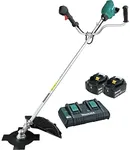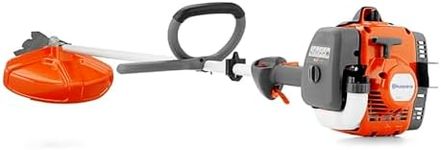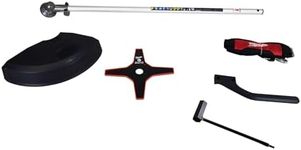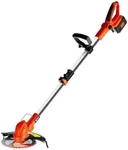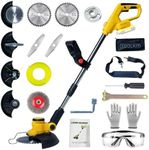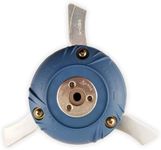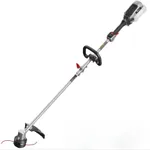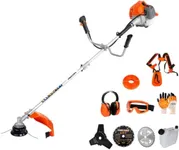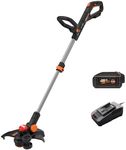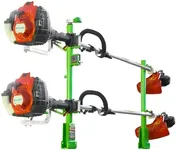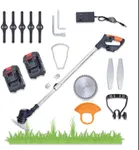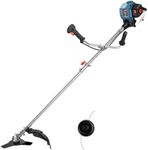Buying Guide for the Best Brush Cutters
Choosing the right brush cutter can make a significant difference in maintaining your garden or property. Brush cutters are powerful tools designed to cut through thick grass, weeds, and even small trees. To find the best fit for your needs, it's important to understand the key specifications and how they relate to your specific requirements. Here are the main factors to consider when selecting a brush cutter.Engine PowerEngine power, measured in horsepower (HP) or cubic centimeters (cc), determines the cutting ability of the brush cutter. Higher power engines can handle tougher and thicker vegetation. For light trimming and small gardens, an engine with lower power (20-30cc) is sufficient. For medium to large areas with dense vegetation, consider a mid-range engine (30-50cc). For professional use or very tough conditions, a high-power engine (50cc and above) is ideal. Choose based on the type and density of vegetation you need to manage.
Cutting WidthThe cutting width refers to the diameter of the area the brush cutter can cut in one pass. A larger cutting width means you can cover more ground quickly, which is useful for large areas. For small gardens or precise trimming, a cutting width of 8-10 inches is adequate. For medium to large areas, a width of 10-15 inches is more efficient. For very large properties or professional use, consider a cutting width of 15 inches or more. Match the cutting width to the size of the area you need to maintain.
WeightThe weight of the brush cutter affects how easy it is to handle and use for extended periods. Lighter models (under 10 pounds) are easier to maneuver and are suitable for smaller tasks and shorter use periods. Medium-weight models (10-15 pounds) offer a balance between power and ease of use, making them suitable for most homeowners. Heavier models (over 15 pounds) are more powerful but can be tiring to use for long periods, so they are best for professional use or very tough jobs. Consider your physical strength and the duration of use when choosing the weight.
Handle TypeBrush cutters come with different handle types, including loop handles and bike handles. Loop handles are more compact and offer better control in tight spaces, making them ideal for small gardens and detailed work. Bike handles provide better leverage and are more comfortable for extended use, especially in open areas. Choose a handle type based on the terrain and the type of work you will be doing. If you need versatility, some models offer interchangeable handles.
Blade TypeThe type of blade determines what kind of vegetation the brush cutter can handle. Nylon string heads are suitable for grass and light weeds. Metal blades are more durable and can cut through thicker vegetation, including small trees and dense brush. Some brush cutters come with interchangeable heads, allowing you to switch between string and blade. Choose a blade type based on the vegetation you need to cut. For general use, a model with both options provides the most flexibility.
Fuel TypeBrush cutters can be powered by gasoline, electricity, or batteries. Gasoline-powered models are the most powerful and suitable for large areas and tough vegetation. Electric models are lighter and quieter, making them ideal for small to medium gardens with access to power outlets. Battery-powered models offer the convenience of cordless operation and are suitable for small to medium areas, but they may require recharging for extended use. Choose a fuel type based on the size of the area and the availability of power sources.
